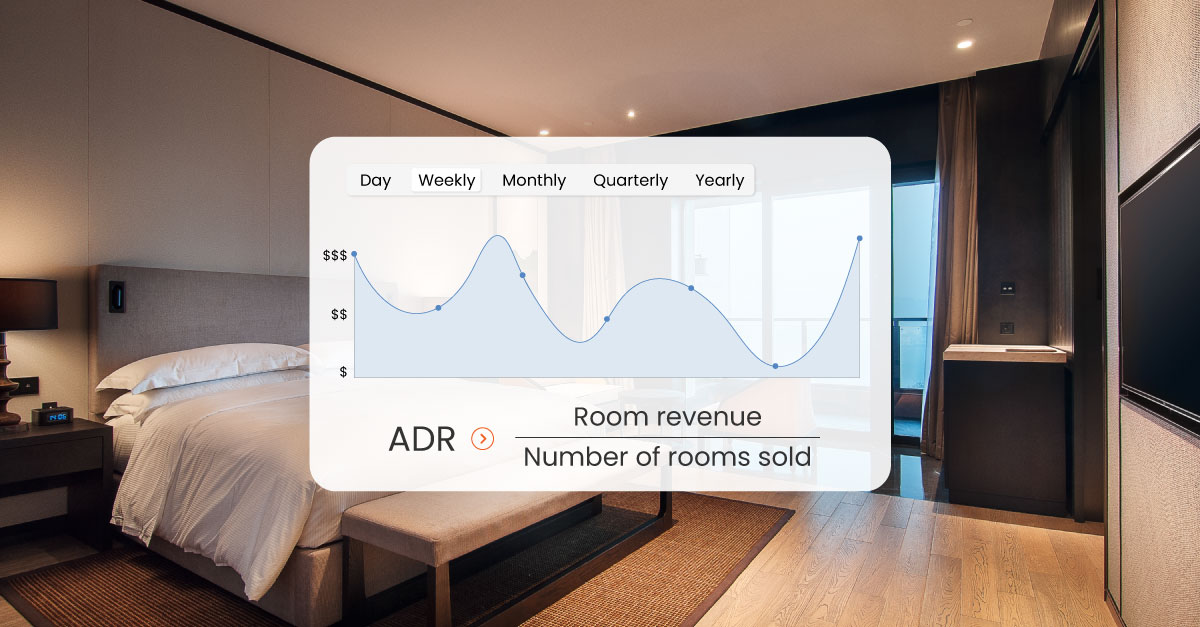
Revenue management comes from a deep understanding of yield and profit. It can be the key to differentiating yourself from the competition and raising your business to new heights. To manage and monitor these three metrics with expertise, let’s deep dive into them.
What is revenue?
Revenue is the total amount of money you earn from each sale, including income generated from room bookings, amenities offered, packages, food and beverage sales, and other services provided to guests. It represents the total earnings that flow into the business, reflecting the overall sales performance, which is before any expenses or costs are deducted.
What is yield?
Yield refers to the earnings or return compared to the resources invested. Yield focuses on optimizing the income from available inventory by adjusting pricing based on demand, seasonality, and other factors. What it tries to achieve is to maximize the revenue generated per available unit, ensuring that prices reflect the market’s willingness to pay while minimizing unoccupied inventory.
What is profit?
Profit is the amount of money remaining after all operating costs are deducted from the revenue generated. Over time, your business should become more profitable, although the profit margin may fluctuate. On average, a property’s profit margin tends to be around 10%.
How yield, revenue, and profit work together
Yield, revenue, and profit are interconnected elements that work together to drive a business’s financial success.
- Revenue growth, while important, does not always translate into higher profit, as increased earnings can be offset by rising operational costs.
- Cost control plays a crucial role in maximizing profit, as managing expenses effectively ensures that more of the revenue contributes to the bottom line.
- Yield strategies, such as dynamic pricing and demand-based adjustments, impact both revenue and profit by optimizing the income from available inventory, ensuring that businesses generate the highest possible return while balancing costs.
These three metrics stand on a delicate balance, where each one influences the others, and effective management of all is crucial for achieving financial success.
How to increase revenue, maximize yield, and improve profit margins
Increasing revenue
Increasing revenue begins with effective pricing and a keen understanding of market demand. One of the most effective strategies is dynamic pricing, where room rates are adjusted in real-time based on factors such as demand, seasonality, and competitor pricing.
You can also boost your revenue by focusing on upselling and cross-selling. Offering guests additional services, such as spa treatments, tours, and dining experiences, can increase the average revenue per guest.
Maximizing yield
Maximizing yield in a hotel involves optimizing how each room is sold, considering both the price and the time of booking. Yield management is crucial to achieving this, as it ensures that rooms are priced according to demand, availability, and market conditions.
One of the most common tactics is overbooking, which helps to account for no-shows and cancellations, ensuring that the hotel remains as close to full occupancy as possible without losing out on revenue.
Segmentation plays an important role in yield management; understanding different guest segments and tailoring rates based on their willingness to pay can help hotels make the most out of their available inventory.
Improving profit margins
Improving profit margins is about controlling costs while maintaining or increasing revenue. Cost optimization strategies are essential, as they ensure that operational expenses don’t erode the profits generated from increased revenue.
Labor costs can also be optimized by implementing technology-driven solutions, such as automated check-ins, smart room management systems, and AI-powered customer service tools, which reduce the workload of the staff.
Focusing on ancillary revenue streams can help improve profit margins. These include services like parking, event hosting, and offering premium services or products that provide high margins.





